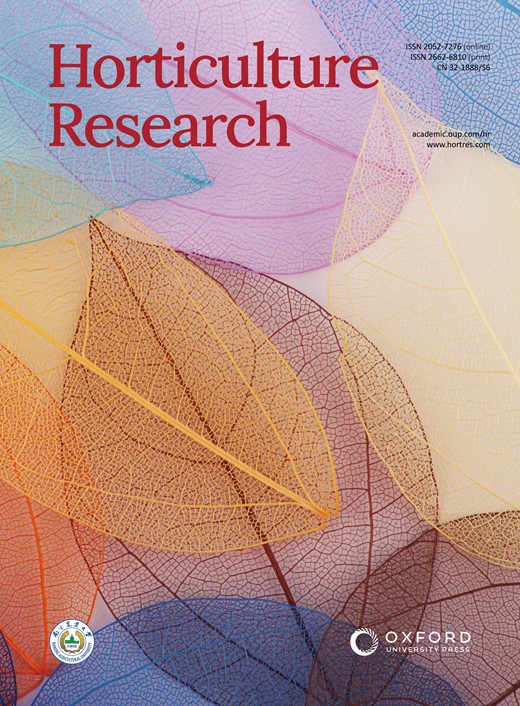Wo interacts with SlTCP25 to regulate type I trichome branching in tomato
IF 8.7
1区 农林科学
Q1 Agricultural and Biological Sciences
引用次数: 0
Abstract
Plant trichomes serve as a protective barrier against various stresses. Although the molecular mechanisms governing the initiation of trichomes have been extensively studied, the regulatory pathways underlying the trichome branching in tomato remain elusive. Here, we found that Woolly (Wo) mutant and its overexpression transgenic plants displayed branched type I trichomes. The expression level of SlTCP25, a transcription factor of type TB1 of the TCP subfamily, was obviously decreased in Wo mutant and Wo overexpressing lines. Knockout of SlTCP25 resulted in the formation of type I trichome branches on the hypocotyls. Genetic evidence showed that SlTCP25 is epistatic to Wo in the branched trichome formation. Biochemical data further indicated that Wo can directly bind to the L1-box cis-element in the SlTCP25 promoter and repress its transcription. We further determined that SlTCP25 interacts with Wo to weaken Wo-regulated the expression of SlCycB2, a trichome branching inhibitor. In addition, the number of trichome branches was significantly increased in Sltcp25Slcycb2 double mutant, suggesting that SlTCP25 and SlCycB2 coordinately repress trichome branching in wild type. In conclusion, we elucidate a molecular network governing the morphogenesis of multicellular trichomes in tomato.求助全文
约1分钟内获得全文
求助全文
来源期刊

Horticulture Research
Biochemistry, Genetics and Molecular Biology-Biochemistry
CiteScore
11.20
自引率
6.90%
发文量
367
审稿时长
20 weeks
期刊介绍:
Horticulture Research, an open access journal affiliated with Nanjing Agricultural University, has achieved the prestigious ranking of number one in the Horticulture category of the Journal Citation Reports ™ from Clarivate, 2022. As a leading publication in the field, the journal is dedicated to disseminating original research articles, comprehensive reviews, insightful perspectives, thought-provoking comments, and valuable correspondence articles and letters to the editor. Its scope encompasses all vital aspects of horticultural plants and disciplines, such as biotechnology, breeding, cellular and molecular biology, evolution, genetics, inter-species interactions, physiology, and the origination and domestication of crops.
 求助内容:
求助内容: 应助结果提醒方式:
应助结果提醒方式:


